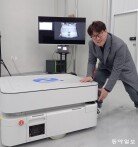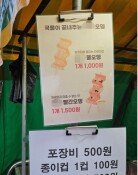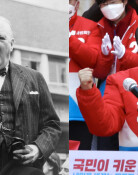North Korea reveals nuclear enrichment facility
North Korea reveals nuclear enrichment facility
Posted September. 14, 2024 07:29,
Updated September. 14, 2024 07:29
On Friday, North Korean media reported Kim Jong Un's inspection of a facility producing weapons-grade nuclear material and released photos of the interior of a uranium enrichment facility, where rows of centrifuges were tightly packed. Kim reportedly remarked that just seeing the site gives him strength. Though North Korea previously invited American nuclear physicist Siegfried Hecker to show him the uranium enrichment facility at the Yongbyon nuclear complex in 2010, this is the first time the regime has openly exposed such a facility.
North Korea's decision to reveal the uranium enrichment facility, which had been operated covertly, is seen as a show of military strength aimed at the U.S. ahead of the presidential election, now just over 50 days away. It demonstrates their ability to mass-produce highly enriched uranium (HEU) for nuclear weapons. Kim Jong Un has long called for the "exponential increase of nuclear weapons." By showing a well-maintained facility lined with thousands of centrifuges, he aims to prove that North Korea's threats are not just talk. Furthermore, Kim Jong Un mentioned the "introduction of new centrifuges that are already in the final stages of completion," a warning that the longer North Korea is ignored, the greater the threat it will pose.
The message embedded in this threat to the U.S. is complex. While it decisively rules out the possibility of future denuclearization or nuclear dismantlement, it subtly hints at the potential for negotiations. Uranium enrichment allows for the large-scale production of nuclear materials much more discreetly than plutonium reprocessing. The 2019 Hanoi U.S.-North Korea summit ended in a "no deal" situation because of disputes over dismantling hidden facilities other than Yongbyon. North Korea’s exposure of the uranium enrichment facility now could be interpreted as a signal that they are open to starting dialogue based on its existence and, further, that they could engage in arms control negotiations with a nuclear freeze as a premise.
North Korea is throwing both threats and bait, attempting to shake up the U.S. presidential race. Their display of nuclear capabilities serves to highlight the policy failures of the Biden administration, which could be interpreted as aiding former President Donald Trump. However, Kamala Harris’s policy on North Korea remains largely undefined, and the North may also aim to influence her future policy directions. While the U.S. is unlikely to fall for such cliche tactics, South Korea must remain vigilant, as we face heavy challenges, from responding to increasingly aggressive North Korean provocations to adjusting policies after the U.S. presidential election.
Headline News
- Joint investigation headquarters asks Yoon to appear at the investigation office
- KDIC colonel: Cable ties and hoods to control NEC staff were prepared
- Results of real estate development diverged by accessibility to Gangnam
- New budget proposal reflecting Trump’s demand rejected
- Son Heung-min scores winning corner kick







